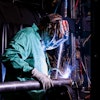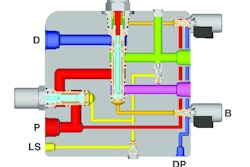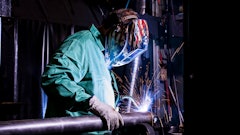The Valve Manufacturers Association (VMA) is celebrating its 75th anniversary throughout the year with a series of events and activities that highlight the industry’s legacy and future. The anniversary coincides with a year in which the industry continues to show its relevance and resilience following the recession.
“Valve manufacturing is an industry that dates back centuries, but the industrial age spurred its growth and importance and led to VMA’s formation. As a voice for this multi-billion industry, we are proud of our 75-year partnership that has helped keep this flagship industry growing and competitive,” explains VMA President William Sandler. “We are using our anniversary to showcase our industry, which is the backbone for many others.”
VMA is marking its anniversary in several ways to capture and tell its important story, including a gala during its Annual Meeting (October 3 to 5) and inviting retired past chairmen and recipients of its prestigious Person-of-the-Year Award. During the conference, VMA will release new data to help quantify the industry’s economic footprint. In addition, VMA has developed a special section of its website (www.VMA.org) to capture the association’s history, a video tribute that features members talking about VMA and its relevance to the industry, as well as a commemorative program.
Valve history provides insights into the evolution of modern society. The Romans—with their comparatively sophisticated water systems—are credited with evolving the technology and setting the course for the modern-day valve industry. Leonardo da Vinci also played a role, designing canals, irrigation projects and other large hydraulic systems, which included valves. Another major milestone for the valve industry was the Industrial Revolution, started by the invention of the first industrial steam engine, which required valve technology to operate.
Several early associations were born to address issues facing the valve industry, including standardization. Among them were the National Association of Fittings Manufacturers and the Valve Institute—both founded in the early 1900s—that later merged in 1933, creating the Valve and Fittings Institute (VFI). As valves and actuators became increasingly specialized, they became viewed as products within the product and were manufactured separately. In response to this trend, 14 valve companies broke away from VFI in 1938 and formed VMA to better represent this growing and increasingly specialized industry.
Today, membership in VMA is recognized as the “seal of approval” since members must be voted in based on a number of criteria that assures they follow certain quality procedures and that their engineering know-how originates from their operations in the U.S. and Canada. In this way, the U.S. and Canadian valve manufacturers have been able to distinguish themselves for excellence in engineering and products. VMA continues to steer and position the industry as it faces the challenges of a changing landscape—globally and locally.
VMA exclusively represents nearly 100 North American manufacturers of valves, actuators and controls, which account for about 80% of total industrial valve shipments out of U.S. and Canadian facilities, as well as suppliers to the industry and distributors/channel partners. VMA companies are an important part of the nation’s economic engine, supplying approximately 35% of worldwide valve demand. Like other engineering and manufacturing industries, the valve industry supports high-quality jobs. VMA members alone employ more than 20,000 people directly and thousands more indirectly.
The valve and actuator business greatly contributes to the success of other key industries that rely on its products to keep their products working. Products manufactured by members are used in numerous industries, including: chemical processing; petroleum refining; oil and gas exploration, distribution and transmission; power generation; nuclear power; water/wastewater; commercial construction; mining; and pulp and paper.


















